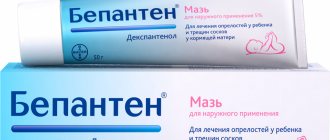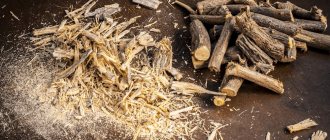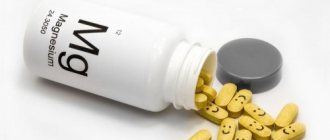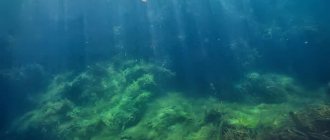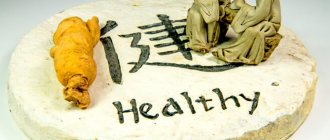Release form and composition
Dosage form of Laminaria thallus (sea kale):
- crushed thalli: pieces of thallus of various shapes from grayish-green to red-brown, light brown, greenish-brown, dark green, sometimes greenish-black or yellowish-brown in color with a salty taste and specific odor; it is allowed to have a white coating of sea salt on the pieces (in a cardboard pack there is 1 inner bag containing 50, 75, 100 or 150 g of raw materials);
- crushed grass: dark gray with a greenish tint, pieces of thalli of various shapes that pass through a sieve with 3 mm holes, covered with a coating of white salts with a salty taste and a peculiar smell (in a cardboard pack there is 1 inner bag made of polypropylene or paper containing 50 , 75 or 100 g of raw materials);
- crushed vegetable raw materials: pieces of thallus of a dark gray color with a greenish tint, different in shape, coated on the outside with a coating of white salts, with a peculiar smell and salty taste (in a cardboard box there is 1 inner paper bag containing 50 or 100 g of raw materials).
Each pack contains instructions for using Laminaria thallus (sea kale).
1 g of the drug contains the active substance: kelp thallus [containing alginate (calcium salts of alginic acids), alginic acid, mannitol, iodide salts, high molecular weight polysaccharides (kelp), micro- and macroelements, as well as other biologically active substances] – 100 %.
Recipes with the addition of kelp
There are a large number of recipes. I offer several of the most popular ones.
Spicy salad with seaweed
To prepare it you need to take:
- 3 – 4 small carrots;
- 2 – 3 tbsp. l. dry kelp;
- Onions – 1-2 pcs;
- A few cloves of garlic;
- 1 tsp. 9% vinegar;
- Seasoning for Korean carrots;
- Vegetable oil – 3-4 tbsp. l;
- Salt - to taste.
Laminaria should be poured with hot water and after boiling, cook for 40 minutes. After this, place in a colander and rinse with cold water. Then cut into thin strips 2–3 centimeters long.
Cut the onion into half rings, and the carrots into strips and lightly fry in vegetable oil.
Salt the kelp and add sautéed vegetables, salt, chopped garlic, and vinegar. Mix all ingredients thoroughly.
Salad ready! Keep refrigerated.
Salad with kelp
Simple, but very tasty and healthy.
To prepare it you will need:
- 250 g kelp;
- 2 cucumbers;
- 3 eggs;
- 1.5 tbsp. l. mayonnaise.
Boil the eggs and cut into cubes, also cut the cucumbers and kelp into cubes if it is long. Mix everything, add salt and mayonnaise.
Salad with crab sticks and kelp
To prepare it you will need:
- 1 PC. onions;
- 100 g crab sticks;
- 250 g kelp;
- 2 eggs;
- 150 g mayonnaise;
- 40 g parsley.
Cut the eggs into cubes, onions into half rings, crab sticks into strips.
Place the kelp in a heap in a salad bowl, arrange crab sticks around it, and put onions on top. Add eggs, mayonnaise and parsley.
Syrniki
To prepare them you will need:
- 700 g cottage cheese;
- 500 g potatoes;
- 2 eggs;
- 100 g kelp;
- 4 tbsp. l. vegetable oil;
- 0.5 liters of sour cream;
- 6 tbsp. l. flour;
- Salt - to taste.
Boil the potatoes and grate them. Add cottage cheese, eggs, salt, kelp, flour. Mix everything well.
Form oval balls. Fry in well-heated oil until golden brown. Before serving, sprinkle with sour cream.
Salad with egg and vegetables
Required ingredients:
- 1 carrot;
- 250 g kelp;
- 1 egg;
- 1 PC. red onion;
- 1 pickled cucumber;
- 2 cloves of garlic;
- A bunch of parsley;
- 3 tbsp. l. olive oil.
Boil the eggs and cut into cubes. Grate the carrots. Chop the onion, cucumber, parsley. Distribute the garlic in a garlic squeezer. Mix everything and add oil.
That's it, the salad is ready. Bon appetit!
If you don't like the taste of kelp, don't force yourself to eat it.
You just need to add 1 tsp. dry kelp in the finished first or second course instead of salt. The taste will not be as pronounced, but the beneficial properties will be preserved.
Pharmacological properties
The raw materials for Laminaria thallus (sea kale) are Japanese kelp (Laminaria Japonica Aresch) and sugar kelp (Laminaria saccharina) of the kelp family. The laxative property of the drug is due to the ability of dry raw materials of seaweed thallus to swell and, increasing in volume, irritate receptors in the intestinal mucosa.
The content of laminarin polysaccharide in the herbal product is up to 21%, mannitol is up to 21%, iodine is 2.7–3% (in the form of iodides and organiodine compounds), fucoidan, gelatinous substance algin, alginic acid, bromine salts, proteins, pantothenic and folic acids, vitamins A, B1, B2, B12, C and D provides the following effects: vitamin and general strengthening (especially for elderly and weakened patients); stimulating the production of thyroid hormones; hypolipidemic; antisclerotic; a mild laxative that regulates the activity of the gastrointestinal tract; normalizing metabolism. In addition, kelp slightly reduces blood clotting, reducing the risk of intravascular thrombosis, and regulates the permeability of vessel walls. A substance has been isolated from seaweed that has a sustained hypotensive effect.
Procurement of raw materials
To obtain kelp, two methods of obtaining raw materials are used. Algae are collected after high tide, when the thalli are washed ashore by the waves. The second method is to catch kelp at a depth of 5 meters in the sea or ocean. The resulting raw material is washed in sea water, carefully removing any remaining sand and salt. Then the algae is inspected and damaged and rough parts that are unsuitable for harvesting are removed. The prepared kelp is laid in a thin layer on a flat wooden surface or cardboard. Drying of raw materials is organized in the sun. The readiness of the thalli is determined by the protruding white coating. After drying, the raw materials are packaged in sealed containers. The shelf life of dried kelp is no more than 3 years if stored correctly.
Contraindications
- chronic pyoderma;
- intestinal obstruction;
- acute abdomen syndrome;
- thyrotoxicosis of various origins;
- acne;
- hemorrhagic diathesis;
- hyperthyroidism;
- multinodular goiter;
- nephritis;
- furunculosis;
- appendicitis and other inflammatory processes in the abdominal cavity;
- nephrosis;
- acute febrile conditions;
- pregnancy and breastfeeding;
- age under 12 years;
- individual intolerance to the components of the drug, including iodine.
Selection and storage
You can buy pickled, salted, fresh (frozen), dry or dried seaweed. The largest amount of valuable components is preserved in dried raw materials. A few tips for choosing kelp will help you purchase high-quality and healthy raw materials:
- The color of algae in any form should be deep green. Yellowness on the product indicates a low grade of product.
- Pickled cabbage should not contain harmful additives: preservatives with the letter “E”.
- When choosing kelp in the form of a salad, you should give preference to transparent containers.
- When buying cabbage in strips, you should pay attention to its thickness. Normal values are from 1.5 to 2 mm. Plus, the straw should not look like porridge.
- There should be no mold on dry seaweed. Laminaria should not be sticky or, on the contrary, fragile and crumbling.
Dried seaweed should be stored in a cloth bag or in a glass container. At a temperature of 2 to 10 degrees Celsius, no penetration of sunlight and moderate humidity, the product can be stored for up to a year. You can freeze seaweed, but keep in mind that repeated freezing will lead to the loss of most of the beneficial elements. Pickled cabbage (with or without additives) can be stored in the refrigerator in a closed container for about 30 days. However, if the container is opened, the salad may spoil within a few days.
Reviews of Laminaria thallus (sea kale)
According to reviews, Laminaria thallus (sea kale) is a safe, effective and affordable drug used for constipation. Many users also recommend taking the drug for effective weight loss, getting rid of cellulite and stretch marks; As part of cosmetic masks, kelp helps tighten and smooth the skin. The benefits of seaweed for the prevention of thyroid diseases are also confirmed. It is recommended to use additionally crushed raw seaweed in cooking instead of salt, especially for those who do not like it fresh.
Among the disadvantages, there is a wide list of contraindications to the use of herbal remedies.
Laminaria - what is it?
Kelp or seaweed is a class of brown algae. Even in ancient times, it was consumed as food and used in folk medicine by peoples living on the shores of the seas and oceans.
Ancient healers believed that it has a rejuvenating effect and prolongs life.
The leader in its breeding is Japan. It is also cultivated in China, Korea, and the Far East. Members of the Bering expedition were the first to know about it and called it “whalebone”.
Today, more than 30 types of it are known, but the Japanese one is considered the most useful. It lives on the shores of the Japanese, Okhotsk, White, and Kara seas. Its different species can be found in the Atlantic, Pacific, and Arctic oceans.
It grows in places with a constant current at a depth of 10 - 35 meters. In the fall it dies off, and in the winter it begins to grow again. Depending on climatic conditions, it can live from 2 to 4 years.
It has a smooth ribbon-like or wrinkled thallus and can reach a length of 12 meters. It grows on rocky shallows, attaching itself to the bottom with the help of branched shoots.
Laminaria is the record holder for iodine content, which is necessary for the body for the proper functioning of the thyroid gland.
It is harvested from June to September. The thallus of 2-year-old kelp is of particular value. It is by this time that the maximum amount of nutrients accumulates in it and contains less water.
Habitats
Kelp algae is cultivated in cold or cool seas. In them it forms entire forests. A lot of seaweed lives in the region of Southeast Asia, where it has long been used as food. The largest kelp farms are located near the island of Hokkaido. Algae grown under artificial conditions is no different from wild algae.
Kelp is also harvested in other regions. Sugary and palmately dissected ones grow in the White and Kara Seas. Some types of cabbage are harvested on the shores of Brazil.
Production and procurement of kelp
Seaweed is a common seaweed that used to be mined manually or using special equipment. But as the need for kelp increased, many manufacturers of supplements and products abandoned such methods.
Now only a small percentage of the total volume of cabbage is harvested from the seas. Most of the beneficial algae are grown on special farms, where the condition and quality of the plant can be constantly monitored. To do this, soil is made on a special section of the seabed near the coast on which spores are planted.
The length of the cut thalli reaches 3-5 m. While the algae is not used, it is kept in special mesh bags in clean sea water. This allows you to preserve the beneficial properties and taste of the cut leaves.
Before the main processing, the thalli are washed so that no sand or dirt remains on them. The rhizoids are trimmed, and a special disinfectant solution is applied to the leaves.
Further actions depend on the harvesting method. The algae is either dried in the fresh air under the sun (then the thalli are placed on floors), or using special hot air dryers.
Then the kelp is cut into long strips 3-5 mm wide. They are either marinated immediately or frozen so that customers can later prepare the dish themselves. Seafood and various dressings are added to pickled cabbage. After the jars are sterilized, they are sent for sale.
Watch the video, which clearly shows the process of collecting algae:
Laminaria saccharide (sea kale) and Fucus bladderwort caught in the White Sea in 2016.
Algae life cycle
Sea kale reproduces by parts of the thallus or zoospores. These are small protozoa that move using microscopic flagella. After some time, they fall off, and the cell wall begins to thicken. The zoospore is now ready to divide. As a result of this process, a multicellular thallus is formed from a small point, from which a large kelp grows.
The algae reproduces and forms in the spring. In summer it reaches its maximum development, and in autumn its growth stops. At this time, the thalli of old algae die off, and new leaves form from the surviving trunks by next year. Such a biological system allows not only to create individual plant colonies, but also to preserve old ones.
The structure of algae
Sea kale close-up
Laminaria is distinguished by a wide brown thallus. The length of the leaf can reach 20 m, and the width - 50 cm. Young algae have short thalli, 3-4 m, and the older the kelp, the larger it grows.
Seaweed does not have roots like regular terrestrial grasses. They are root-like processes - rhizoids. Some algae have a disc-shaped sole instead, which attaches to the seafloor and underwater rocks. The closer the thallus is to the rhizoids, the thinner the stem from which root-like processes grow. Wide parts of the algae leaf are used for food.
